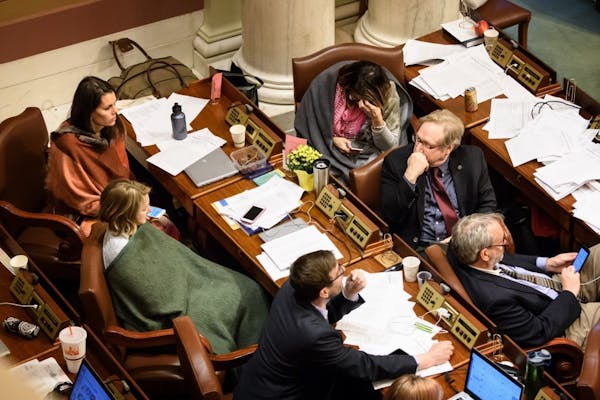The University of Minnesota says it will look to tuition hikes and program cuts to balance its budget now that state lawmakers have rebuffed its request for nearly $100 million in extra funding.
Both the U and the Minnesota State system, with 37 public colleges and universities, received far less than they had sought from the Legislature. And that will have a direct impact on students starting this fall, officials say.
"I think we've reached that stage where we're going to have to begin looking at programmatic cuts," said Matt Kramer, the U's vice president for university relations.
The higher education bill, approved by both the House and Senate this week, gives the University of Minnesota a $54.6 million increase over the next two years, a little over a third of its request for $147 million.
The Minnesota State system fared somewhat better, receiving $106 million, nearly 60 percent of its $178 million request.
Minnesota State officials have warned that its schools are facing a financial crisis, with projected deficits reaching as high as $475 million by 2025.
This week, spokesman Doug Anderson said it was "too early to discuss the impact" of the state funding.
The legislation limits tuition hikes at Minnesota State's two-year colleges to 1 percent this fall, and requires a tuition freeze in the 2018-2019 school year at all the system's two- and four-year campuses.
The University of Minnesota, which operates independently, has no such limits. President Eric Kaler has said previously that the U might raise tuition 5 percent for in-state students this fall, and 10 percent for nonresidents, if state funding falls short.
On the Twin Cities campus, undergraduate tuition is $12,546 a year for in-state residents, and $22,210 for nonresidents.
Kramer, the U spokesman, said that tuition is one of the "few levers" available to the university to make ends meet. The other is cost-cutting, and he notes that the U already has sliced $68 million in administrative costs since 2013, as part of a pledge to cut $90 million by 2019.
The next option, he said, is cutting programs. "What you'll see at the University of Minnesota is a real serious, deliberate review of everything we do," he said.
In all, the Legislature provides about 18 percent of the U's annual $3.6 billion budget. Nearly half its income comes from federal research grants or other restricted funds, which cannot be used to cover rising expenses, Kramer said.
Both the U and Minnesota State are expected to finalize their new tuition rates and approve their annual budgets in June.
Michael Vekich, chairman of the Minnesota State Board of Trustees, released a brief statement this week thanking Gov. Mark Dayton and the Legislature "for their hard work reaching an agreement." He also vowed to work with campus leaders to "restore long-term financial health to all of our colleges and universities."
Maura Lerner • 612-673-7384
Want to celebrate 4/20? Here are 33 weed-themed events across Minnesota.

Legendary record store site in Minneapolis will soon house a new shop for musicheads

Former Gov. Jesse Ventura boasts he could beat unpopular Trump or Biden if he ran for president

